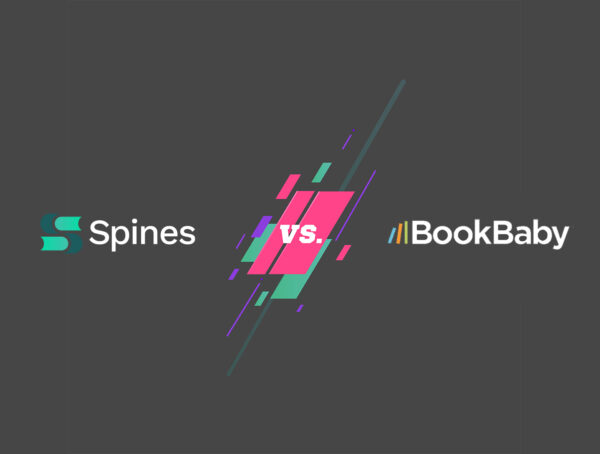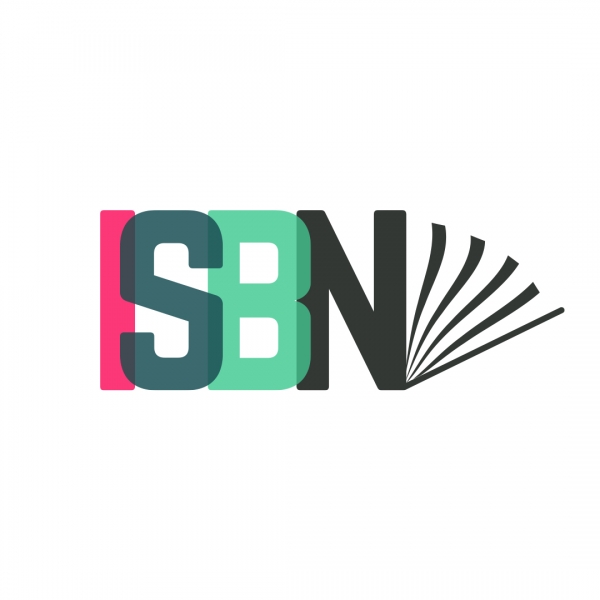In the ever-evolving landscape of the publishing industry, the advent of digital technology has significantly transformed the way authors bring their works to the public. Self-publishing, once a niche and often stigmatized route, has burgeoned into a formidable avenue, thanks to the accessibility and opportunities provided by the digital age. The democratization of publishing has empowered authors with the autonomy to self-publish a book directly to a global audience, bypassing the traditional gatekeeping mechanisms of established publishing houses.
Central to this revolution is the pivotal choice authors face between two primary formats: eBooks and print books. Each medium offers distinct advantages and challenges, fundamentally influencing an author’s journey from manuscript to published work. The debate between opting for the digital convenience and reach of eBooks versus the tactile appeal and traditional prestige of print books is more than a mere preference—it’s a strategic decision that affects everything from production costs to market reach.
For aspiring authors, understanding the pros and cons of each format is crucial. eBooks offer the allure of lower upfront costs and the potential for wider, instant book distribution, appealing to the tech-savvy, avid reader, and those with an eye towards international markets. Conversely, print books cater to the traditional book enthusiast, offering a physical product that many still prefer, whether for the feel of the paper or the aesthetic appeal of a bookshelf. However, printing a book can involve higher production and distribution costs than publishing ebooks, presenting a significant hurdle for independent authors.
Self-Publishing Overview
Self-publishing is defined as the process whereby authors publish their work independently, without the involvement of an established publishing house. This mode of publishing allows authors full control over the creative and selling processes, from the manuscript’s content and design to its marketing and distribution. The evolution of self-publishing has been remarkable; it has transitioned from a niche, often stigmatized option to a mainstream and highly respected choice for many authors. This shift is largely attributable to the advent of digital technology, which has lowered barriers to entry and democratized access to publishing resources.
In contrast to traditional publishing models, where a publishing house assumes the responsibility (and financial risk) of editing, designing, printing, book marketing, and distributing a book, self-publishing places these responsibilities and other costs more squarely on the author. Traditional publishers often curate their selection, choosing works they believe will succeed in the market, which can make it challenging for new or niche authors to get signed. In self-publishing, however, authors can bypass these gatekeepers, bringing their work directly to their audience. This direct-to-consumer approach in self-publishing not only increases the diversity of available literature but also allows authors to retain a greater share of their profits.
The rise of digital platforms and technology has been a cornerstone in the evolution of self-publishing. Online retailers like Amazon, along with platforms such as Smashwords and Lulu, have simplified the process of publishing and distributing books. Print-on-demand services have also minimized the financial risks associated with print runs, allowing authors to sell print books without upfront investment in inventory. Digital formats have further broadened the scope of self-publishing, with eBooks offering a cost-effective, accessible option for authors to reach a global audience instantly.
Moreover, social media and digital marketing tools have empowered self-published authors to promote their works more effectively and to build personal connections with their readers. These technological advancements have not only leveled the playing field but also fostered a vibrant, supportive community of independent authors.
In summary, the landscape of self-publishing has undergone significant transformation, driven by digital innovation. This evolution has provided authors with unprecedented opportunities to publish, market, and sell their works independently, challenging traditional publishing norms and reshaping the literary world. As self-published books continue to gain credibility and visibility, the distinction between traditional and self-published authors becomes increasingly blurred, heralding a new era of diversity and accessibility in literature.
The eBook Revolution
The rise of eBooks marks a significant chapter in the narrative of self-publishing, heralding what can aptly be termed the ‘eBook Revolution’. This digital shift has not only expanded the horizons for self-publishing authors but also redefined the reading experience of eBooks for consumers worldwide.
Advantages of Self-Publishing eBooks
Lower Upfront and Distribution Costs
One of the most compelling advantages of self-publishing eBooks is the significant reduction in upfront and distribution costs. Unlike print books, which require a considerable investment in printing, storing, and shipping physical copies, eBooks eliminate these physical constraints. The digital format allows for a one-time creation cost, primarily involving professional editing, cover design, and formatting, after which the book can be distributed an infinite number of times without additional expenses. This cost-effectiveness makes eBook publishing an attractive option for authors, particularly those just starting out or experimenting with new genres.
Accessibility and Convenience
The digital nature of eBooks offers unparalleled accessibility and convenience, both for authors and readers. Readers can purchase and download books instantaneously to their e-readers or mobile devices, allowing them to carry entire libraries in their pockets. For authors, the ability to update content and publish an ebook version across multiple platforms ensures their work is easily accessible to a wide audience. This ease of access extends to publishing platforms as well, where authors can manage their eBook versions, track sales, and receive royalties, all from the comfort of their homes.
Global Reach and Instant Delivery
eBooks transcend geographical boundaries, offering authors a global reach that was once the exclusive domain of traditionally published books. The instant delivery of digital books means that an author in one part of the world can publish a book that becomes available to readers across the globe within minutes. This global reach is instrumental for authors looking to tap into international markets and diversify their reader base.
Challenges of eBook Self-Publishing
Market Saturation and Visibility Issues
With the barrier to entry significantly lowered, the eBook market has seen an exponential increase in titles, leading to market saturation. The sheer volume of available eBooks can make it challenging for individual authors to stand out and gain visibility. Authors must invest time and resources into marketing and establishing a strong online presence to navigate this crowded marketplace successfully.
Reading Habits and Preferences for Physical Books
Despite the convenience of eBooks, many readers still prefer the tactile experience of physical books. The reading habits and sensory preferences of this segment of the audience pose a challenge for eBook authors, who must find creative ways to engage these readers. Additionally, the experience of browsing in physical bookstores and the collectible nature of print books are aspects that eBooks cannot replicate, influencing some readers’ preferences towards printed books and paperback versions.
Dependence on Digital Platforms and Internet Access
eBook publishing is inherently tied to digital platforms and internet access, creating a dependency that can be a double-edged sword. Changes in platform policies, algorithm updates, or shifts in digital marketplace dynamics can significantly impact eBook visibility and sales. Moreover, readers in areas with limited or unreliable internet access may find it challenging to download and read eBooks, limiting the reach in such regions.
In conclusion, the eBook revolution has democratized the publishing industry, offering myriad advantages to self-publishing authors, from cost savings to global accessibility. However, the challenges of market saturation, reader preferences, and platform dependency require strategic navigation. Understanding these dynamics is crucial for authors to leverage the full potential of eBook self-publishing successfully.
The Enduring Appeal of Print Books
Despite the digital surge, the allure of print books remains unwavering, illustrating the timeless appeal of tangible literature. Self-publishing print books carries its own set of unique advantages and challenges, underscoring the complexity and resilience of physical media in an increasingly digital world.
Benefits of Self-Publishing Print Books
Print on Demand
One of the most significant advancements in self-publishing print books is the print-on-demand (POD) technology. POD allows authors to print books only as they are sold, dramatically reducing the need for large upfront investments and the risk of unsold inventory. This model offers a flexible approach to the printing cost, enabling authors to manage their printed book’s lifecycle more efficiently and respond dynamically to demand fluctuations.
Physical Product and Tangible Experience
There is an undeniable charm to holding a book, feeling the weight of its pages, and the texture of its cover, which eBooks cannot replicate. Print books offer a sensory experience that many readers cherish, from the smell of the paper to the visual pleasure of cover art. This tangible aspect of print books can enhance the reading experience, making it more personal and memorable. For many, a physical bookshelf filled with their favorite titles is a testament to their love for literature, their entire library serving as both a personal archive and a visual display of their literary journey.
Unique Value in Certain Markets and Genres
Print books hold a unique value in certain markets and genres that transcend the mere content of the printed book. For instance, children’s books in print form are often more engaging for young readers, featuring colorful illustrations and interactive elements that foster a love for reading. Similarly, collector’s editions, art books, and coffee table books rely on the quality of their physical presentation to appeal to their audience. These segments, where the printed book’s materiality is integral to its value, underscore the enduring relevance of print in the publishing ecosystem.
Hurdles Faced by Self-Published Print Authors
Higher Printing Costs
Unlike their digital counterparts, print books come with higher production costs, including printing, binding, and potentially, warehousing. These costs can vary significantly based on factors such as page count, paper quality, and cover type (paperback vs. hardcover). For self-published authors, managing these costs while maintaining quality can be a delicate balancing act.
Distribution Challenges
The distribution of print books presents its own set of challenges, from securing shelf space in physical bookstores to managing logistics for online sales. Unlike eBooks, which can be distributed globally with a few clicks, print books require physical shipping, adding time and cost to the delivery process. These distribution hurdles can limit an author’s reach and complicate inventory management.
Need for Physical Storage
For authors who opt not to use POD services, the need for physical book storage for inventory can be a significant concern. Storing physical books often requires space and proper conditions to prevent damage, which can be impractical or costly for many self-published authors. This aspect of print publishing necessitates additional planning and resources, which can be a deterrent for some.
In conclusion, while the rise of digital books has transformed the publishing landscape, the appeal of print books endures, offering a unique set of advantages that resonate with many readers and authors alike. The tactile experience, the aesthetic value, and the distinct appeal in specific genres and markets highlight the irreplaceable role of print in the literary world. However, navigating the challenges of printing costs, distribution, and storage requires careful strategy and planning, underscoring the complexity of self-publishing in the print domain.
Comparing Costs and Revenues
Navigating the financial terrain of self-publishing requires a keen understanding of the costs and revenue potentials associated with the two formats: eBooks and print books. Each format presents unique financial implications, from production to distribution, which can significantly influence an author’s strategy and success.
Production Costs
eBooks: The production costs to create eBooks are primarily digital, encompassing professional editing, cover design, and eBook formatting. Unlike print books, there are no physical materials to account for, making the initial investment relatively lower. Hiring a professional cover designer and editor are common expense, but once the digital file or eBook is prepared, it can be reproduced indefinitely without additional costs.
Print Books: Print books entail all the production costs of digital files and eBooks, with the added expenses of printing and possibly warehousing. Printing costs vary widely depending on factors such as page count, paper quality, and whether the book is a either paperback version or a hardcover edition. Print-on-demand services can mitigate some of these costs by printing books only as they are sold, but per-unit costs remain higher for paper copies compared to digital copies.
Distribution Costs
eBooks: Distribution for eBooks is predominantly handled through online platforms, which take a percentage of each sale but do not typically charge upfront fees. This model significantly reduces distribution costs, allowing authors to retain a larger portion of their sales revenue.
Print Books: The distribution of print books can be more complex and costly, involving physical shipping, handling, and potentially storage fees. Distribution of paper books through brick-and-mortar bookstores also involves wholesale discounts, further reducing the author’s take-home revenue. Print-on-demand can again reduce some of these costs by eliminating the need for large inventories and warehousing.
Marketing Costs
Both eBooks and print books require marketing to reach potential readers, with costs varying based on the strategies employed. Social media advertising, email marketing, and even book signings and launch events are common expenses. The effectiveness of marketing efforts is crucial in both formats, as visibility in a saturated market can make or break a book or e-reader’s success.
Revenue Potentials and Pricing Strategies
eBooks: The pricing flexibility of eBooks allows authors to experiment with different price points to maximize sales and revenue. Promotional pricing or temporary free downloads can be effective strategies to increase visibility and attract reviews, which can, in turn, drive more sales.
Print Books: Print books often command higher prices than eBooks, reflecting their physical nature and the associated production and shipping costs. However, the higher price point might limit the volume of print sales by a few dollars compared to more affordably priced eBooks.
In conclusion, the financial aspects of self-publishing vary significantly between eBooks and print books. While eBooks offer lower upfront costs and higher profit margins per sale, print books can command higher prices and appeal to a market segment that prefers physical copies. Authors must consider these financial dynamics alongside their target audience and personal goals when choosing the best self-publisher and format for their work.
Market Trends and Reader Preferences
The landscape of book publishing and consumption is continuously shaped by evolving market trends and reader preferences, influenced significantly by technological advancements and the pervasive reach of social media.
Current Trends in eBook and Print Book Sales
The publishing industry has witnessed fluctuating trends in eBook sales and print book sales over recent years. While eBooks experienced a surge in popularity with the advent of e-readers and tablets, offering convenience and portability, print books have seen a resilient and, in some cases, resurgent demand. This enduring appeal of print books is attributed to the tactile experience they offer, a preference particularly pronounced among readers who value the physical aspect of reading, from the feel of the pages to the visual appeal of bookshelves filled with their favorite titles.
However, eBooks continue to hold a significant market share, driven by their lower price points, the immediacy of access through instant downloads, and the growing concern for environmental sustainability. eBooks’ share of the market tends to spike particularly in genres dominated by adult fiction, where the convenience of discreetly carrying multiple titles for leisure reading is highly valued.
Insights into Reader Demographics and Preferences
Reader demographics play a crucial role in shaping market trends. Younger readers, who are typically more tech-savvy, show a greater inclination towards digital formats, attracted by the integration of multimedia elements and the ease of access on their mobile device devices. On the other hand, older demographics exhibit a stronger preference for print books, often citing the physical experience and the potential strain of reading from screens as determining factors.
Furthermore, the genre also influences format preference. For example, academic texts and reference books benefit from the searchability and portability of digital formats, while children’s books and high-quality art books are often preferred in print rather than digital to capitalize on the quality of their illustrations and interactive elements.
The Impact of Technology and Social Media
Technology and social media have significantly impacted publishing and reading habits, democratizing access to books and altering discovery and purchase pathways. Social media platforms have become pivotal for book marketing, with book trailers, author interviews, and interactive reader communities enhancing engagement. Additionally, algorithms and online reviews guide reader choices more than ever, making online visibility crucial for authors.
E-reading technology continues to evolve, with newer devices offering more paper-like reading experiences and options to minimize eye strain, making digital reading more appealing to a broader audience.
The dynamic interplay between market trends and reader preferences underscores a diverse and evolving publishing landscape. As technology advances and reader habits shift, the publishing industry must continuously adapt, balancing between the immediacy and convenience of digital formats and the tangible, enduring appeal of print books.

Publishing with Spines
Publishing with Spines, the platform formerly known as BooxAI, represents a revolutionary leap in the world of publishing, thanks to its cutting-edge Artificial Intelligence technology. Spines offers an unparalleled suite of services designed to meet the diverse needs of today’s authors, ensuring their stories reach the widest possible audience in the most efficient manner.
One of the standout features of Spines is its ability to generate all formats of a book using AI. Whether authors are looking to publish paperback books in traditional print through Print-on-Demand (POD), digital eBooks, or immersive Audiobooks, Spines provides a seamless, integrated solution. This versatility ensures that authors can cater to the varied preferences of their readers, making their works accessible in whatever format they desire.
Furthermore, Spines excels in offering global distribution, a critical factor for authors aspiring to share their stories beyond local boundaries. Through Spines, a book can quickly achieve an international presence, being distributed across 100+ global channels. This extensive network includes top retailers like Amazon and Barnes & Noble, thereby guaranteeing significant visibility and reach. Such widespread distribution is pivotal in today’s interconnected world, where readers across different continents are continually seeking new content.
What truly sets Spines apart is the combination of affordability and speed, attributed to its AI-driven processes. This efficiency not only reduces the traditional barriers of time and cost associated with publishing but also empowers authors to maintain a faster pace in delivering their content to the market. By choosing Spines, authors can enjoy the benefits of a platform that is at the forefront of the digital publishing revolution, offering a comprehensive, cost-effective, and rapid route to publication.
Embracing Your Publishing Journey
In conclusion, the exploration of self-publishing has illuminated the vast landscape of opportunities and challenges presented by both eBooks and print versions of books. Key considerations include the cost-effectiveness and global reach of eBooks, alongside the tangible appeal and enduring demand for print editions. Aspiring self-publishers stand at a crossroads, where understanding their audience’s preferences and the nuances of digital versus physical publishing is paramount. It’s essential to align one’s personal aspirations with the dynamic forces of market trends. Authors are encouraged to delve into the self-publishing journey with a strategic mindset, embracing the format that best resonates with their vision and the evolving preferences of the global readership.
Your Publishing Journey Awaits – Start NowFAQs – How to Self-Publish an eBook
Q1: What are the main differences between self-publishing an eBook and a print book?
Self-publishing an eBook offers lower upfront costs, instant global distribution, and easy updates. In contrast, print books provide a tangible experience, higher production costs, and require storage or print-on-demand services.
Q2: Is self-publishing an eBook cheaper than a print book?
Yes, self-publishing an eBook is generally cheaper because it eliminates printing, storage, and shipping costs. Print books involve production costs such as paper, binding, and distribution expenses.
Q3: Which format—eBook or print—has a higher earning potential?
Both formats have earning potential, but it depends on the market. eBooks offer higher profit margins per sale and appeal to a digital audience. Print books can command higher prices but come with increased costs.
Q4: Do self-published print books sell better than eBooks?
It depends on the audience. eBooks perform well in fiction and digital-friendly genres, while print books are preferred for children’s books, collector’s editions, and non-fiction like cookbooks or art books.
Q5: How does print-on-demand help self-published authors?
Print-on-demand (POD) allows authors to print books only when they are ordered, eliminating large upfront costs and storage needs. This model helps independent authors minimize financial risk.
Q6: What challenges do self-published eBook authors face?
eBook authors face market saturation, reader preferences for physical books, and reliance on digital platforms for visibility and sales. Strong marketing and SEO strategies are crucial for success.
Q7: Which platform is best for self-publishing eBooks and print books?
Amazon Kindle Direct Publishing (KDP) is a top choice for eBooks and print-on-demand. Other platforms include Smashwords, Lulu, and Spines, which offer AI-driven formatting and global distribution.
Q8: Should I publish both an eBook and a print book?
Yes, offering both formats maximizes reach. eBooks provide affordability and instant access, while print books attract traditional readers and enhance credibility. A combined strategy can increase sales and audience engagement.








